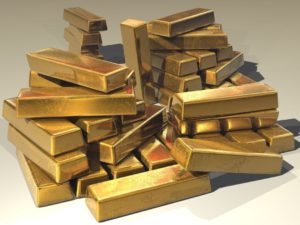Table of contents
Among the precious metals popular as an investment, palladium is somewhat overshadowed by gold, silver and platinum. However, the price per ounce is currently above that of gold after a rally that has lasted for years. Commodities are currently experiencing a real boom.
Prices for wood, steel, insulation materials and also for various metals are currently going through the roof. This is largely due to the fact that the global economy, supported by aid money and economic stimulus packages, is once again running at full speed, but the supply of raw materials has not picked up to the same extent.
Those who want to trade commodities are often faced with the question of whether a physical investment or a CFD makes more sense. In which cases trading with palladium CFDs can make sense as well as everything else about palladium you will learn in the following article.
What are the uses for palladium?
In general, it can be said that palladium is an exceptionally good catalyst for many chemical reactions. To explain: a catalyst lowers the activation energy of chemical reactions, so that two substances can react faster with each other. The areas of application for palladium cover three main areas.
Automotive industry
Palladium is frequently used in exhaust catalytic converters for internal combustion engines in particular. While platinum is primarily used for diesel vehicles, it is primarily used in gasoline engines. The change in purchasing behavior for automobiles since various diesel emissions scandals is driving up prices. Gasoline cars are now clearly preferred by the majority of people. About 80 % of palladium demand comes from the auto industry.
Chemical industry & medical technology
In the chemical industry, palladium is in demand for the production of hydrogen, for example. Here, the high diffusibility (water vapor permeability) of the precious metal is exploited. Medical technology applications are primarily in dental medicine. Dental prostheses are often alloyed with palladium to make them more resistant.
Investment
Increasingly, many investors have also recognized the value of palladium, for example as a hedge against currency devaluation. The price trend of the last five years easily outshines even the performance of the S&P 500. Physical investments in palladium coins or bars are possible, as well as indirect investments via derivative financial products such as a CFD.
How big are the deposits of palladium and where are they located?
The world's reserves of palladium are limited and already heavily depleted. The quantities not yet mined will suffice for another 80 years or so, but could be used up sooner if demand increases. Palladium is often extracted from nickel or copper ores. The deposits are mainly located in Russia, Australia, Ethiopia, South Africa and America. With a combined share of about 90 percent of total annual production, Russia and South Africa are responsible for the lion's share of palladium extraction.
What are the factors influencing the price of palladium?
Reduction of the flow rate
As mentioned in the previous paragraph, two countries, Russia and South Africa, account for a significant share of the total production volume. This is naturally associated with a high degree of dependence of the customers on these two countries and the mine operators there.
The following factors may have a negative impact on the production volume and on the palladium price:
- domestic or foreign policy tensions,
- Strikes, work stoppages,
- Mine accidents,
- Natural disasters such as earthquakes or floods.
If the quantity extracted falls despite high demand, the price rises. If, on the other hand, the volume produced exceeds demand, the price falls.
Automotive demand or economic situation
The automotive industry is the largest consumer of palladium, accounting for around 80 percent. Therefore, the demand of the car companies exerts a massive influence on the palladium price. In times of a booming economy and high car sales, prices can be expected to rise; conversely, recessions lead to a drop in prices. Growth rates in the automotive sector are therefore a good short-term indicator for the course of the palladium price.
Does seasonality have an impact on palladium?
Since the price of palladium, as explained above, correlates strongly with the economic situation, a certain cyclicality of demand can certainly be observed. Likewise, looking at historical price developments, typical patterns in the price development can also be observed within a year. These patterns are called seasonality. Traditionally, the months from November to March are strong months for palladium. On the other hand, in the summer and early autumn months falling prices or a negative performance have been observed. However, these historical values should naturally be viewed with a certain amount of skepticism and do not necessarily allow conclusions to be drawn about future price developments.
Palladium price forecast: How will the palladium price develop until 2025?
Making future price forecasts is an extremely difficult undertaking. This is because the basic assumptions on which the forecasts are based can also turn out to be completely wrong or be thwarted by so-called black swans. Black swans, such as the Corona pandemic, are unpredictable events that can cause severe crisis situations.
In general, however, it is clear that the palladium price will depend heavily on how the automotive market develops. After all, electric cars no longer require palladium components. In Europe, demand for gasoline and diesel models is likely to decline steadily due to strict emission requirements; some manufacturers such as VW and Audi already plan to completely abandon the development of new internal combustion vehicles in the near future. In China, too, the focus is increasingly on electric vehicles. In emerging countries such as India, on the other hand, internal combustion vehicles are likely to remain in demand for some time to come.
Nevertheless, palladium could also emerge as a winner from the energy transition, namely if hydrogen becomes established as a medium for energy storage. For this to happen, the production of so-called green hydrogen would have to be significantly more cost-efficient in the future than it is today.
Research on this has been going on for years. Platinum metals (including palladium in addition to platinum itself) are indispensable for electrolysis, i.e. the splitting of water into hydrogen and oxygen. So if green hydrogen becomes established on the market, this could give a boost to palladium demand. However, hydrogen technology is still in its infancy; it will probably be many years before it is used on a large scale.
Advertising:
Klicken Sie auf den unteren Button, um den Inhalt von marketools.plus500.com zu laden.
Risk note Plus500: 82% of CFD retail investor accounts lose money.
How to trade palladium?
If you want to trade commodities, there are basically three ways available to you: A direct, i.e. physical, investment, an indirect investment via index certificates or CFD trading, and an investment in shares of listed companies that are active in the exploration or mining of palladium.
Direct trading in palladium:
With a direct purchase of palladium you acquire physical bars or coins in with a precisely defined weight. The direct purchase is particularly suitable for long-term investors. Note, however, that physical palladium as an investment is not yet as common as gold or silver investments. This may lead to a high spread between the purchase price and the possible selling price.
Indirect Palladium Investment:
Those who shy away from the expense associated with direct investment (spread and storage), but still want to invest for the long term, can purchase an index certificate on the price of palladium. Such a certificate replicates the world market price 1:1. Here, too, long-term participation in the price development is possible.
Trading with palladium:
Those who rather want to speculate on short-term price fluctuations should consider CFD trading. To explain: A CFD (abbreviation for contract for difference) is a derivative financial product, in which one concludes a contract with his broker on a certain underlying value (here: the palladium price).
This speculation can be concluded both on rising and falling prices. In case of a successful trade, the broker owes you the difference between the price when the contract was concluded and the price when the CFD was sold.
Leverage allows you to maximize potential profits while accepting increased risk when trading CFDs. The highest possible leverage is ten for CFDs on commodities. CFDs must be resold within one trading day, otherwise additional fees will be charged. Trading with CFDs is possible within the usual stock exchange hours. The close of trading is usually at 22:00.
What are the most exciting palladium stocks?
Nornickel
Nornickel (former company name: Norilsk Nickel) is considered the global market leader among palladium mining companies. It is also the world leader in nickel production. The Russian company is also considered to be broadly diversified in other respects, since in addition to nickel and palladium it also produces copper, gold and silver. As is almost usual with Russian shares, Nornickel also impresses with a very favorable valuation (the P/E ratio is below ten) and an extremely high dividend yield in the range of nine to ten percent. A certain risk is posed by the various environmental scandals with which the company is currently having to deal legally.
Anglo American Platinum
The world's largest platinum and second largest palladium producer is Anglo American Platinum. The mines of Anglo American's subsidiary are all located in South Africa. While the palladium business accounts for about 40 % of Nornickel's sales, the figure for Anglo American Platinum is over 50 %. Anglo American Platinum has the lowest mining costs per ounce compared to its competitors, has further palladium deposits in reserve and pays out a respectable dividend yield of over two percent.
Advantages of trading with palladium CFDs
If you want to trade commodities, i.e. take advantage of short-term price fluctuations, a CFD offers you some advantages. For example, you do not have to worry about the safe storage of your physical precious metals, which is usually associated with ongoing costs. A minimum holding period for tax-free disposal does not apply to CFD trading.
In addition, you can flexibly speculate on both rising and falling prices and thus profit from price developments in both directions. If you trade commodities with a leveraged CFD, the possible profits increase significantly. Of course, possible losses are also greater, which is why leverage should be used with caution and only after thorough research including chart technical analysis.
Risk note Plus500: 82% of CFD retail investor accounts lose money.
Plus500 risk note: CFD are complex instruments and come with the high risk of losing money quickly because of the leverage effect. 82% of retail investor accounts lose money trading CFDs with this provider. You should consider whether you understand how CFD work and whether you can afford to take the high risk of losing your money.









